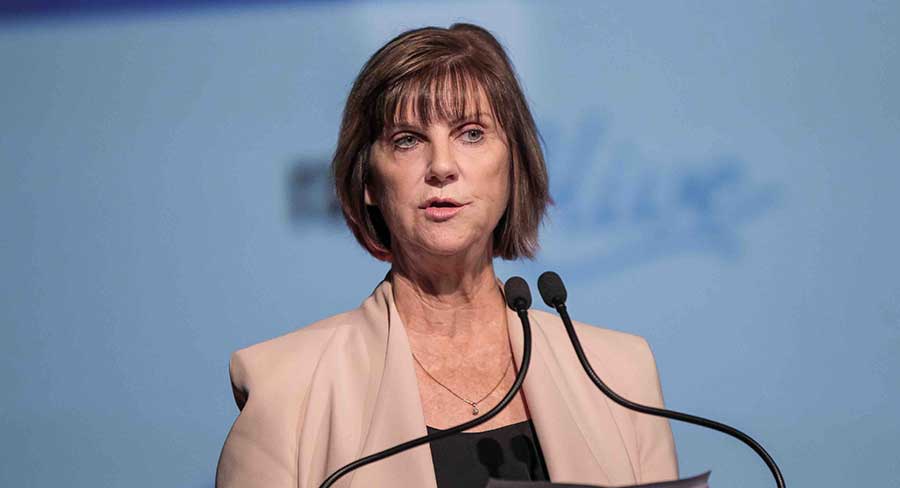There’s a high level of anticipation about the survey 6 2020 radio ratings results coming out on Tuesday this week. Lots of reasons for this of course – it is the first GfK metro survey since ratings stopped back in April this year after survey 2 was released.
It is also the first results the industry will get for new programs broadcasting on what are the two biggest stations in Australian metro radio – 3AW and 2GB breakfast.
The chief executive of Commercial Radio Australia (CRA), Joan Warner, is expecting to see some growth in maybe both time spent listening (TSL) and cume audiences.
“We saw radio listening held up across the year through our e-diary pulse survey we did that showed strong listening levels at home,” Warner told Mediaweek.
“The survey showed there was some drop for in-car listening at the height of Covid-19, and we had a substantial increase in at-home listening to more than make up for that. There was an increase in TSL at home as well.
“We are sure the results will prove to all the stakeholders – advertisers and agencies – that radio continues to be a place they need to advertise if you want to get to your target audience.”

As a standalone survey, with nothing carried forward from the previous survey, Warner said it will be a great indicator of listening levels and market positioning of stations. “Minor fluctuations shouldn’t be over-emphasised, but if there is a massive increase in listening of course that should be taken seriously.” [Laughs]
Having an entirely fresh sample means it will be similar to what happens in survey one each year.
“Although this time we are in living in very different circumstances, living different lives. Lives have been very impacted, including how people interact with media. We are not expecting too much change in terms of market positioning of stations. The interesting things will be TSL and cumes.
“People are creatures of habit so we are expecting breakfast listening to remain high. There could be more listening in the middle of the day. The results won’t mean that people won’t change again when Covid-19 ends. Some people thing the work-life balance has changed forever with more working from home. I’m not so sure about that.
“The key message is we know listening has remained strong which we know from the e-pulse survey. Stations’ internal tracking shows that too and it seems to indicate market positions remain stable too.
“We have a feeling that cumes have gone up, with variations around TSL on various parts of the day. There is still an element of uncertainty about the market and peoples’ habits.”
This new survey has again featured a mix of paper and online diaries, except for Melbourne where it has been all online. “In Melbourne very soon after this survey started everything came crashing down. We went to e-diaries and placement of those diaries was done over the phone. Having virtually all the results from e-diaries in Melbourne will make it an interesting case study for the future.”
The havoc caused by Covid has impacted the future of radio ratings. Warner: “It has focused our minds on the future. We have the Measurement Innovation Project which has been underway for two years. Part of that is looking at the use of passive measurement and increasing the number of e-diaries to more than the current 30% and the impact that would have. Toward the end of next year we are looking at the arrival of real-time streaming data.
“We are expecting to be able to announce a roadmap by the end of this year to having a more mixed methodology in terms of more e-diaries and less paper diaries.
“We certainly don’t want to be in this position again where we have to pause three surveys. We want to future-proof surveys in case of further disruption.
“At least next year we will still have some paper diaries, but you might find a more rapid introduction of e-diaries and other forms of measurement across the year.”
Warner said there will never be less than eight surveys a year. “We would never reduce the number of surveys and the market would not allow us to do that. In the future there could perhaps be more data releases and mixed methodology may allow us to do that as we phase it in.”
See also: GfK Radio Ratings 2020, Survey 2: Highlights + Full Results
Revenue impact
The broadcasters who are members of Commercial Radio Australia have had a rough year. “We now the impact to metro revenue this year because we collect the data and report it on a quarterly basis,” said Warner. “We know the impact in metro has been savage and significant for our metro members.
“Anecdotally our regional members tell us the impact hasn’t been as great in smaller markets where there are more direct advertisers. There has still been an impact because many direct clients were also shut down. But certainly smaller markets don’t seem to have had as savage a beating as big metro markets and large regional markets.”
See also: Commercial radio ad revenue tumbles 20% in FY2019/20, Q4 down 46%
